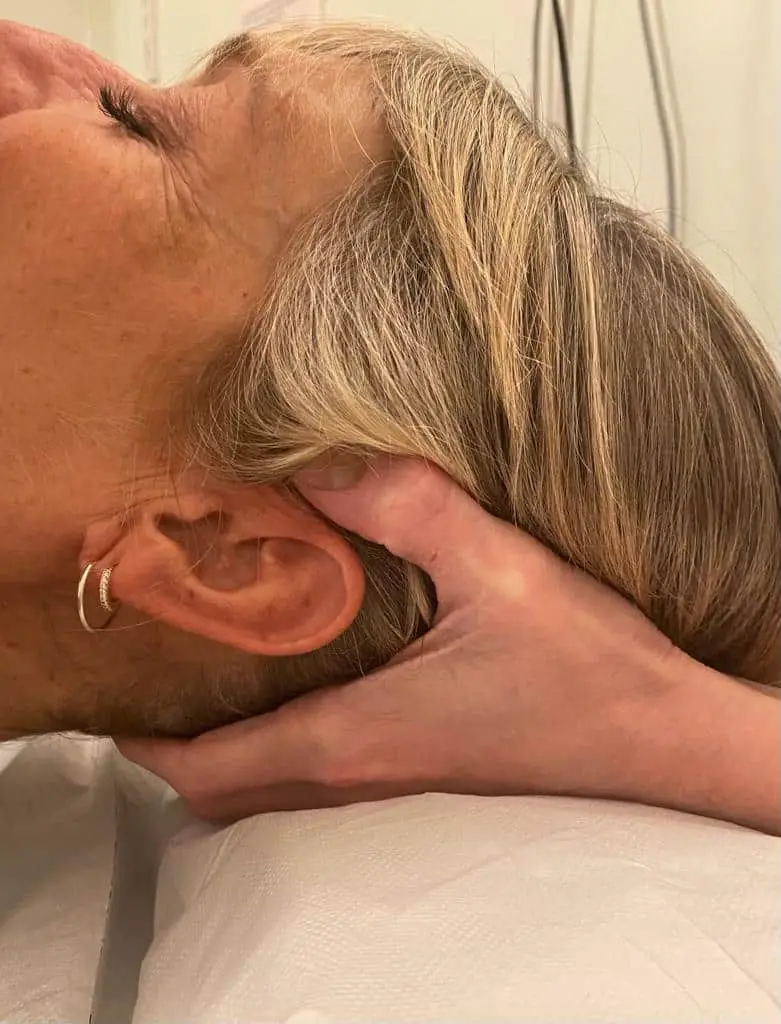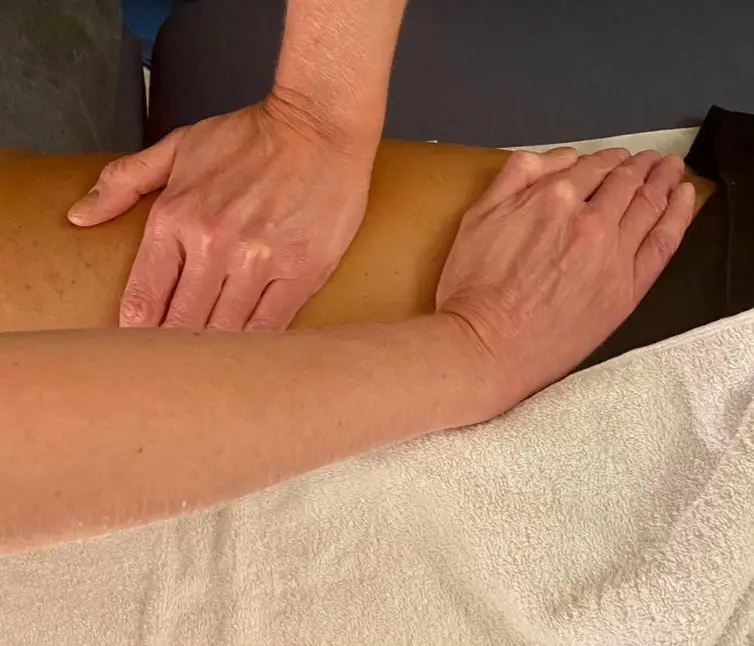I have done some various training in MFR over the years, but most recently, with Ruth Duncan of Myofascial Release UK, one of the leading teachers in this technique. Fascia is a web of connective tissue that covers structures in the body, including muscle fibres and organs, and supports bones, ligaments and tendons. The intertwining of muscle and fascia is embodied in the term ‘myofascia’, as ‘myo’ means muscle, and ‘fascia’ means ‘band’. It’s usually a thin layer – imagine clingfilm – but there are areas where it’s thicker, such as in the lower back, and the iliotibial bands along the sides of our thighs. It consists of collagen, elastin and ‘ground substance’ (made of hyaluronic acid and proteoglycans (Ruth Duncan, Myofascial Release (Hands-on Guides for Therapists, 2022)). Fascia itself is fascinating and has many functions and properties, and exciting new discoveries continue to be made in ongoing research around the world

Like muscles, fascia can get tight/stiff, and when we stretch, we’re stretching through fascia as well as muscles. MFR is partly aimed at releasing these restrictions. Some techniques feel like a good stretch or a ‘freeing up’, and improvements can be made in range of movement and posture. We could explain this partly by the fact that fascia is also connected to nerve endings and mechanoreceptors, and so it plays a part in proprioception (our sense of ourselves in space) and coordination. So you may choose MFR for physical tension, imbalance or injury recovery. But also, other techniques can potentially help conditions such as sinusitis and jaw tension/temporomandibular joint dysfunction, and it may help alleviate chronic pain. This is probably due to the relaxing, slow and gentle nature of the technique, which taps into the limbic system and relaxes the nervous system – although we cannot state for certain the exact mechanisms behind it. However, scientific research suggests there are several explanations, and year on year, we gain more insight with each new discovery.

From a Chinese Medicine perspective, some believe fascia is equivalent to what has been thought of as a conceptual organ, the ‘Triple Burner’, which comprises three sections of the body and has its own channel (or meridian). Broadly speaking, the Triple Burner helps to distribute the flow of ‘Yuan’ or ‘Source’ Qi, which is a kind of pre-natal or vital energy source. It has a connection with all parts and functions of the body, just as fascia does. In both entities, any restrictions or blockages in one part will have an impact on other parts. Another function that fascia and the Triple Burner have in common is fluid transportation. And interestingly, there is a striking similarity between an interpretation of the main pathways of fascia in the body (although it is all one and connected) and the acupuncture channels – see Peter T. Dorsher’s Myofascial Meridians as Anatomical Evidence of Acupuncture Channels (Medical Acupuncture, June 2009, 91-97 http://doi.org/10.1089/acu.2009.0631), and Thomas W. Myers, Anatomy Trains, Myofascial Meridians for Manual Therapists and Movement Professionals (Elsevier, 4th Edition).

MFR can be applied either as a standalone treatment, or in combination with other treatments, i.e. the other types of massage I do, or indeed acupuncture. No oil or wax is applied. We go down to the right depth with gentle pressure, tuning into the fascia and warming up the tissues. We feel for where the restrictions are, apply compression and decompression techniques, and follow the movements in the tissue. Many patients feel very relaxed and report improved sleep after a treatment.